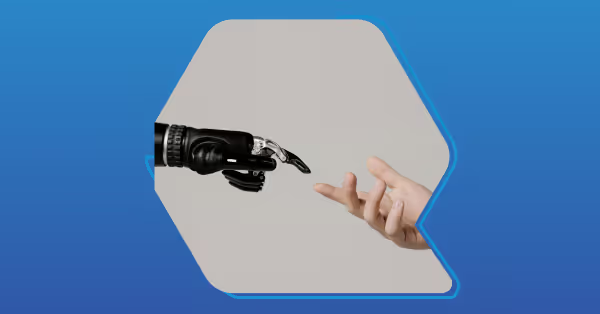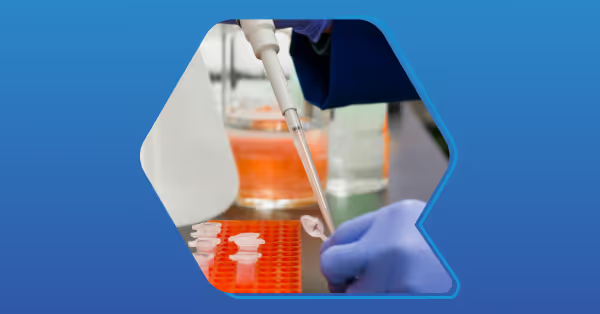Everything Labs Need to Know About Regulatory Compliance
From GxP to ISO, here’s your ultimate guide to quality control and compliance for laboratories.


Let’s talk about every lab’s two favorite words: regulatory compliance.
Whether it’s GxP or ISO, if your lab wishes to meet compliance requirements, demonstrate the reliability of its results, and build its reputation, you’ll need systems to monitor your data, implement quality controls, and pass regular inspections.
To help you prepare, we compiled this resource to guide you through the most common compliance standards, the process to get certified, and recommendations for what you can do to prepare for an inspection.
The Most Common Compliance Standards Labs Need to Adhere to
When it comes to compliance in laboratories, there are three standards you can expect to hear about often:
- GxP: GxP is a generic term that covers several industry best practices. You can think of GxP as “Good <fill in an industry> Practice” which lays out a series of standards and guidelines to follow. GxP standards are primarily overseen by the FDA.
- ISO 17025: ISO 17025 is an internationally recognized standard that specifies requirements for the competence, impartiality, and consistent operation of laboratories. ISO’s latest revision included updates on IT (information technology), quality management system processes, and more emphasis on the responsibilities of senior management. There are multiple accreditation bodies that we list in the next section.
- 21 CFR Part 11: 21 CFR Part 11 is a set of regulations established by the FDA that outlines the requirements for electronic records and electronic signatures. Labs in industries regulated by the FDA – such as pharmaceutical, medical device, and biotechnology companies – are required to follow the standards defined in 21 CFR Part 11.
How to Get Certified
While it’s natural that you may be nervous over the thought of an inspection, certifying your lab for each of these standards is a fairly straightforward process.
You can expect to follow the following steps:
- Implement a system to monitor your lab against the certification requirements
- Set up proper document procedures (storage of key documents and SOPs)
- Implement audit trails to track data
- Conduct internal audits to confirm you are following requirements
- Pass inspections when required
One key difference to note: to be ISO 17025 certified you will need to contact one of the following accreditation bodies (for the United States):
- The ANSI-ASQ National Accreditation Board (ANAB)|ANSI-ASQ National Accreditation Board
- The American Association for Laboratory Accreditation (A2LA)[7]
- Perry Johnson Laboratory Accreditation (PJLA)
- American Industrial Hygiene Association
- International Accreditation Service, Inc. (IAS)
- National Voluntary Laboratory Accreditation Program (NVLAP) - technically part of the US government and only accredits a few narrow disciplines
To meet ISO standards, you will need to set up a Quality Management System (QMS), document your procedures, train your staff, and then contact an accreditation body and pass inspection.
How to Prepare for an Audit or Inspection
First, take a deep breath.
Inspections are designed to confirm you are following the regulatory standards, not to trip you up. When trying to meet the above standards, we recommend you do the following before you prepare for an audit or inspection:
- Review your lab’s documentation
- Train your staff
- Ensure quality management systems are in place
- Review data integrity
- Review and assess your equipment
- Review traceability of data
Let’s walk through each step.
Review Your Documentation
Proper document storage is a key piece of lab compliance. You’ll need to ensure that all SOPs are up-to-date and followed by your staff. Make sure to review and organize all relevant records and logbooks as well, and verify that all equipment maintenance and calibration records are complete. Lab compliance starts with information storage, so take care to work through these requirements carefully.
Train your Staff
Start with a refresher training on relevant procedures and regulations based on the compliance standard you wish to meet. As time goes on, ensure all staff members understand their roles during an audit and practice mock audits to familiarize staff with the process. With proper preparation, audits and inspections can become routine.
Check Quality Management Systems
Whether you use a QMS or manage your lab’s data manually (more on that later), take time to review your quality control processes. Make sure processes are documented and followed by your staff, and review any corrective and preventative actions to ensure they are documented as well.
Ensure Data Integrity
Review data handling processes and data integrity. This is especially important with 21 CFR Part 11. You’ll need to verify that electronic records are secure and backed up and that you have audit trails in place. It’s important to review any access logs as well to prevent unauthorized access to key data.
Review Equipment and Facilities
You should regularly conduct a thorough cleaning and organization of the lab. Verify all equipment is properly maintained, calibrated, and labeled. Ensure all safety measures are in place and clearly marked.
Review Traceability of data
Regularly ensure that all materials, samples, and reagents are properly labeled and traceable. This is a good practice to keep whether or not you are preparing for an audit as it will prevent the usage of expired reagents or running out of supplies which can slow down your lab.

Common Reasons Labs Fail Inspection
Follow the above guidance, and inspections should quickly become routine. There are a few common reasons labs fail to meet inspection standards though, here are the top ones we’ve seen:
- Poor document storage: From incomplete SOPs to missing records, make sure all documentation is in order.
- Data integrity issues: Incomplete (or nonexistent) audit trails can make you noncompliant.
- Equipment issues: Make sure to regularly maintain and calibrate equipment. This will help your lab far beyond inspection readiness.
- Protocol failures: From poor training to failure to adhere to SOPs, failing to consistently follow protocols in your lab can trip you up in an audit.
- Insufficient systems for QC: Labs that rely on manual methods like pen and paper or an Excel spreadsheet are at risk of insufficient systems to manage data and quality control.
You can avoid these by adhering to the requirements in the previous section and tracking the metrics we’ll list in the next section.
8 Quality Control Metrics Labs Need to Track to Help Meet Regulatory Standards
Meeting these compliance standards requires having a handle on your lab’s data, inventory, and staff. To make things simpler for you at inspection time, it’s helpful to regularly track these key metrics in your lab:
- Equipment calibration and maintenance frequency: Set up a regular schedule for maintaining lab equipment and ensure your records are up to date.
- Staff training completion rates: Implement training for your staff and document completion rates and scores.
- Corrective and preventive action (CAPA) closure rates: Document any corrective and preventative actions for your lab including closure rates and timeframes.
- Uptime and security incidents: Keep track of uptime for electronic systems and document unauthorized access and security breaches.
- Electronic record and signature compliance rates: This is a key metric to track to meet ISO 17025 requirements.
- Reagent and inventory accuracy: Make sure that your inventory records are accurate to ensure proper usage, storage, and maintenance of materials.
- Error rates; No matter your industry, staying on top of error rates and reducing errors can help your lab remain productive.
- Document control and record keeping: Monitor the proper management of documents and records, including test procedures, calibration records, and QC data.
And that’s just the start, we have 32 more metrics in our guide. If you rely on physical notebooks or spreadsheets to track this data you are putting your lab at risk of noncompliance. Read on to see why.
The Risks of Using Pen and Paper to Track Lab Data
It’s not just the sheer number of metrics you need to track in your lab that makes pen and paper or Excel spreadsheets a poor way to manage lab data. Relying on manual methods to track and record data and inventory in your lab introduces these other risks:
- Data loss: Loss of critical data through physical damage, misplacement, or degradation over time
- Lack of audit trails: Compliance challenges with regulations like 21 CFR Part 11 due to lack of audit trails and version control
- Error risk: Increased risk of errors from illegible handwriting, manual transcription, and inconsistent data entry
- Limited access to data: Limited accessibility and collaboration due to physical records being in one location and only accessible by one person at a time
- Poor data retrieval: Inefficient processes requiring manual data entry, physical storage space, and time-consuming searches for historical records
Learn more about the dangers of relying on pen and paper or spreadsheets over software to manage your lab’s data.

The Best Software Labs Can Use For Compliance
Many labs still rely on pen and paper or spreadsheets to manage their data. If you ask us, this does your lab a serious disservice (and makes meeting compliance standards a major headache).
Instead, we recommend using software to digitize your lab’s operations, store documents, and more. The most common software platforms available to labs are:
- ELN: An ELN (Electronic Lab Notebook) is a digital version of a lab notebook. An ELN can help with the documentation, storage, retrieval, and sharing of experimental data and processes for a lab. This can be especially useful for labs looking to digitize their records or labs with distributed teams that need to share data.
- QMS: A QMS(Quality Management System) is a software platform designed to meet customer requirements and regulatory standards, ensuring a company produces products and performs services consistently and efficiently.
- LIMS: A LIMS (Laboratory Information Management System) is a software platform designed to support a wide range of laboratory activities, including…
When it comes to meeting regulatory requirements, an ELN can be useful but it pales in comparison to a LIMS and a QMS. A LIMS is one of the best software platforms to help labs meet GxP and when combined with a QMS is a fantastic asset in meeting ISO 17025 standards.
Some LIMS (like QBench) come with an integrated QMS giving you the best of both worlds.
Download the Free Inspection Readiness Checklist
No matter the compliance standard your lab wishes to meet, take a deep breath. Audits, inspections, and accreditation do not need to be a cause for concern or stress – especially if you have the software and systems in place to monitor your lab.
To help you in your compliance journey, we prepared an inspection readiness checklist. In this free checklist, you’ll find metrics to track and steps to take as your lab prepares for an inspection.
Don’t forget to use the right tools for the job though, if your lab has not already invested in a LIMS we recommend you start the process now! Our free checklist will recommend the top vendors available to choose from.
QBench Regulatory Compliance Checklist
While this checklist cannot guarantee your lab will be compliant, it will be a major help in getting organized as you prepare for an inspection.






